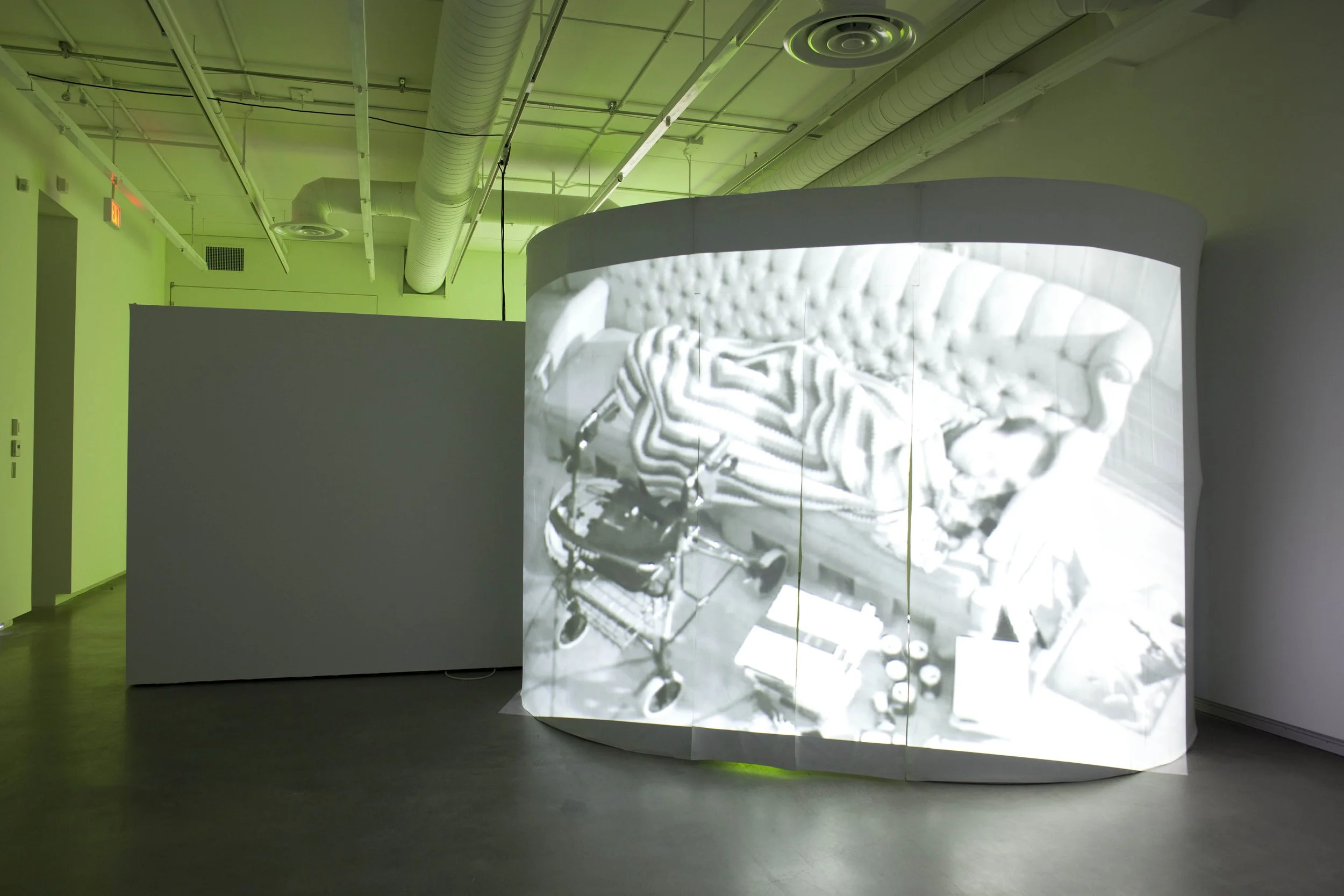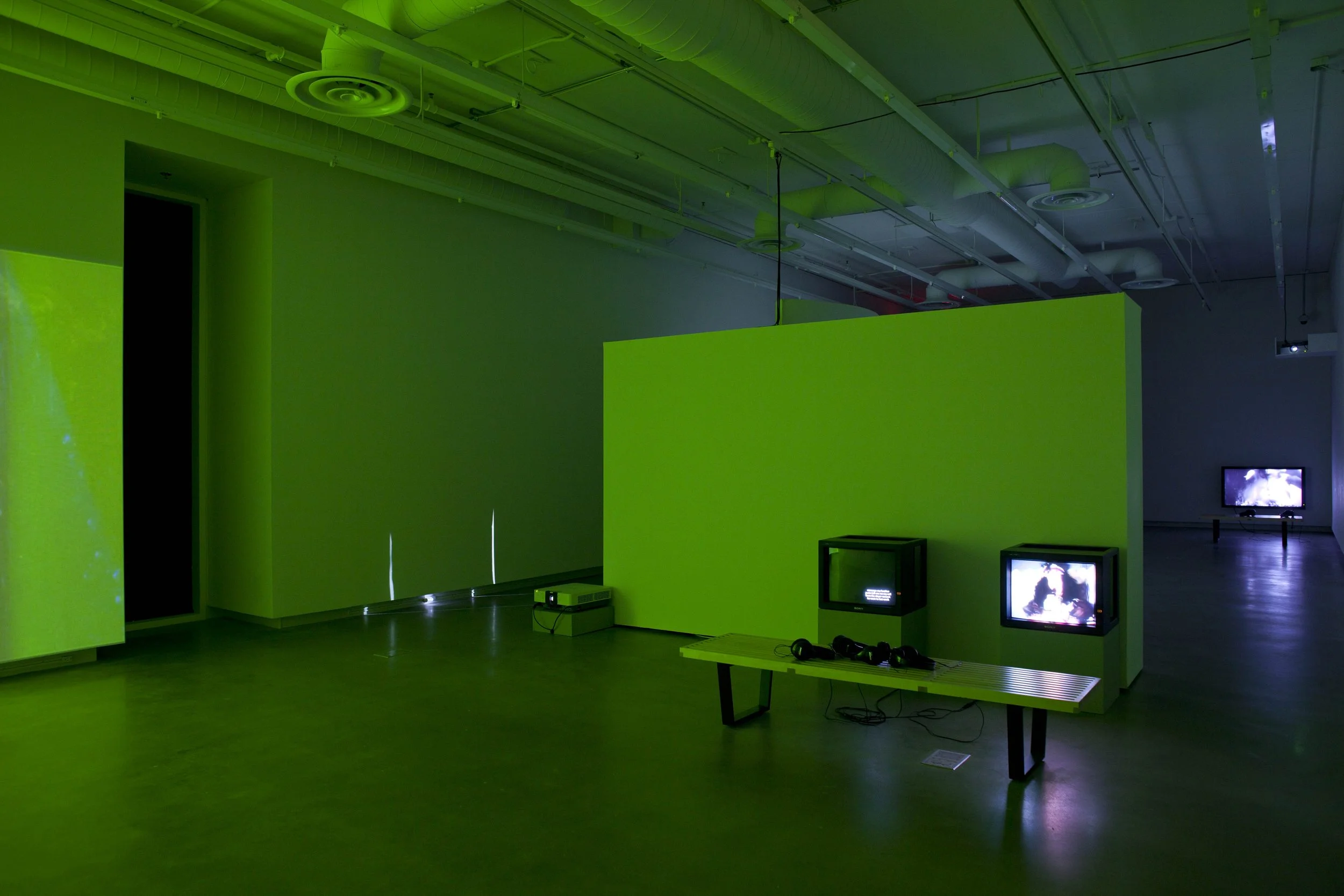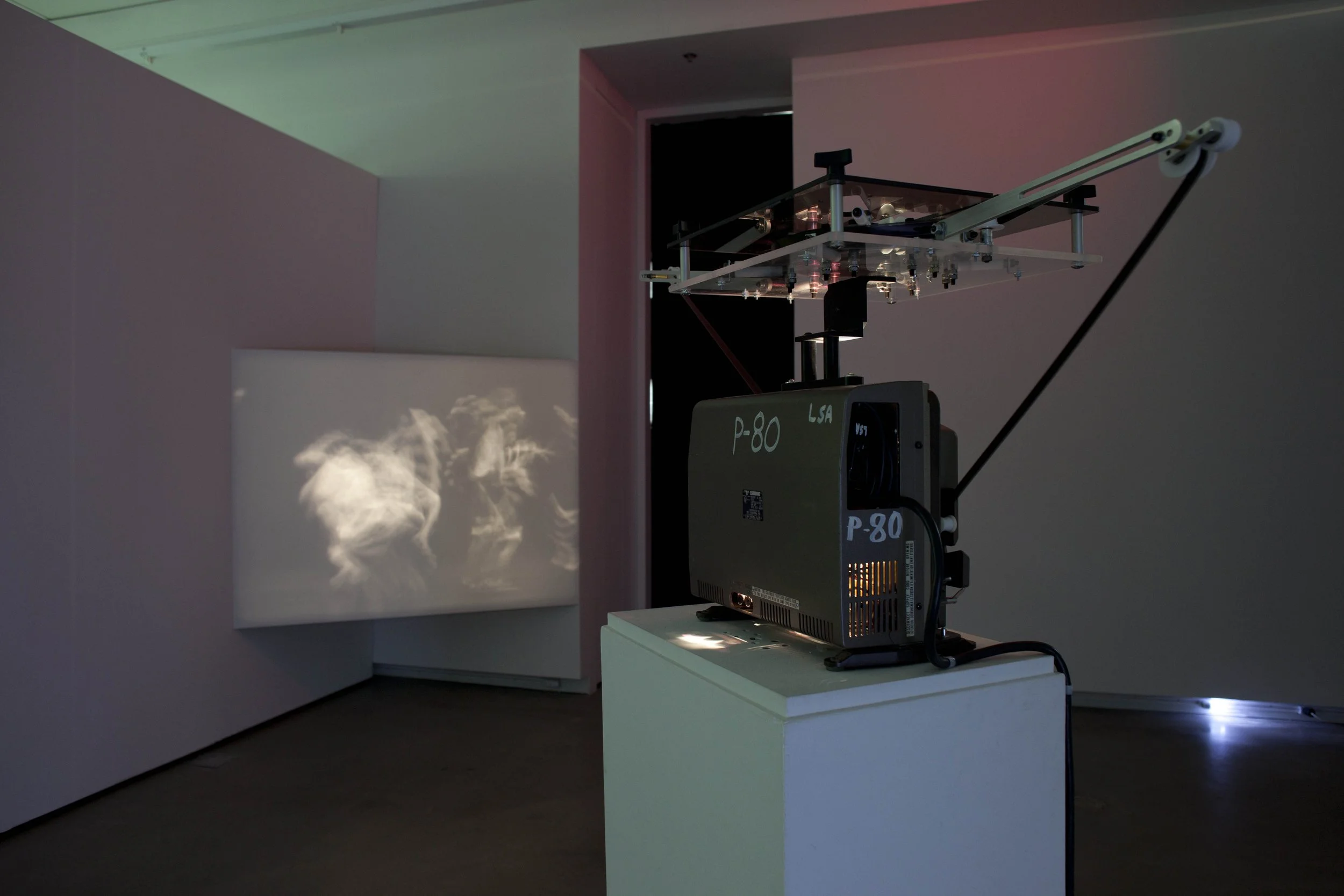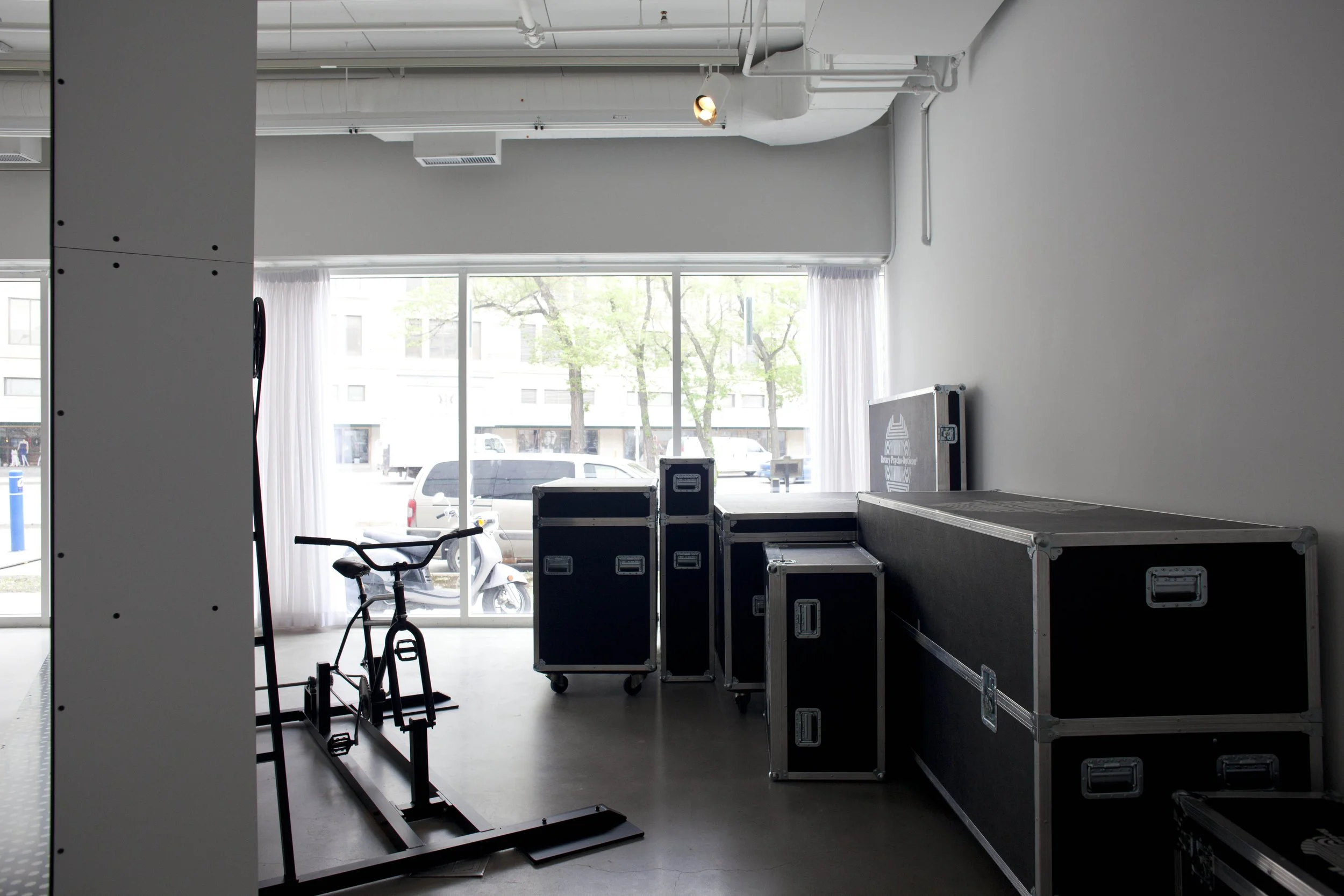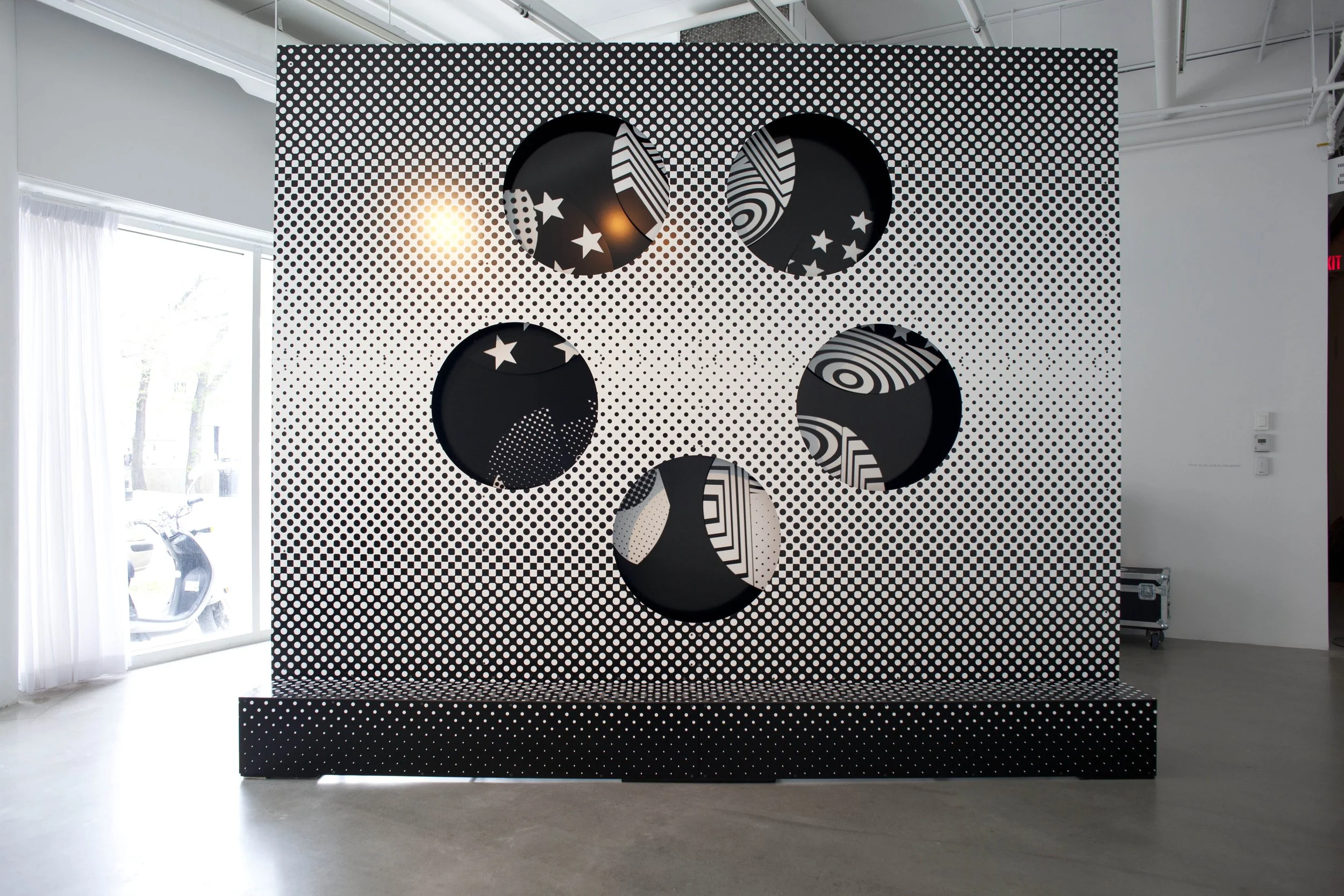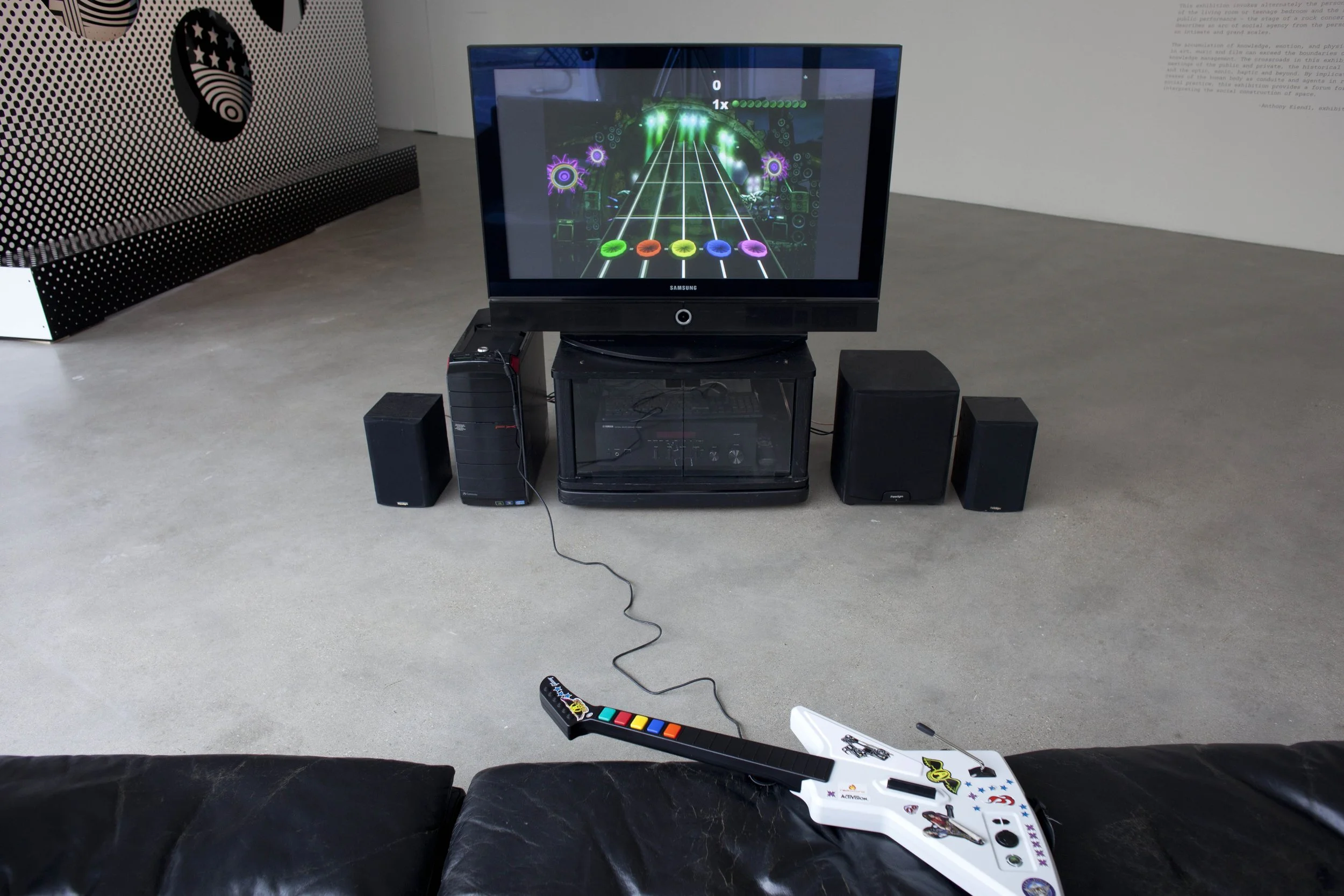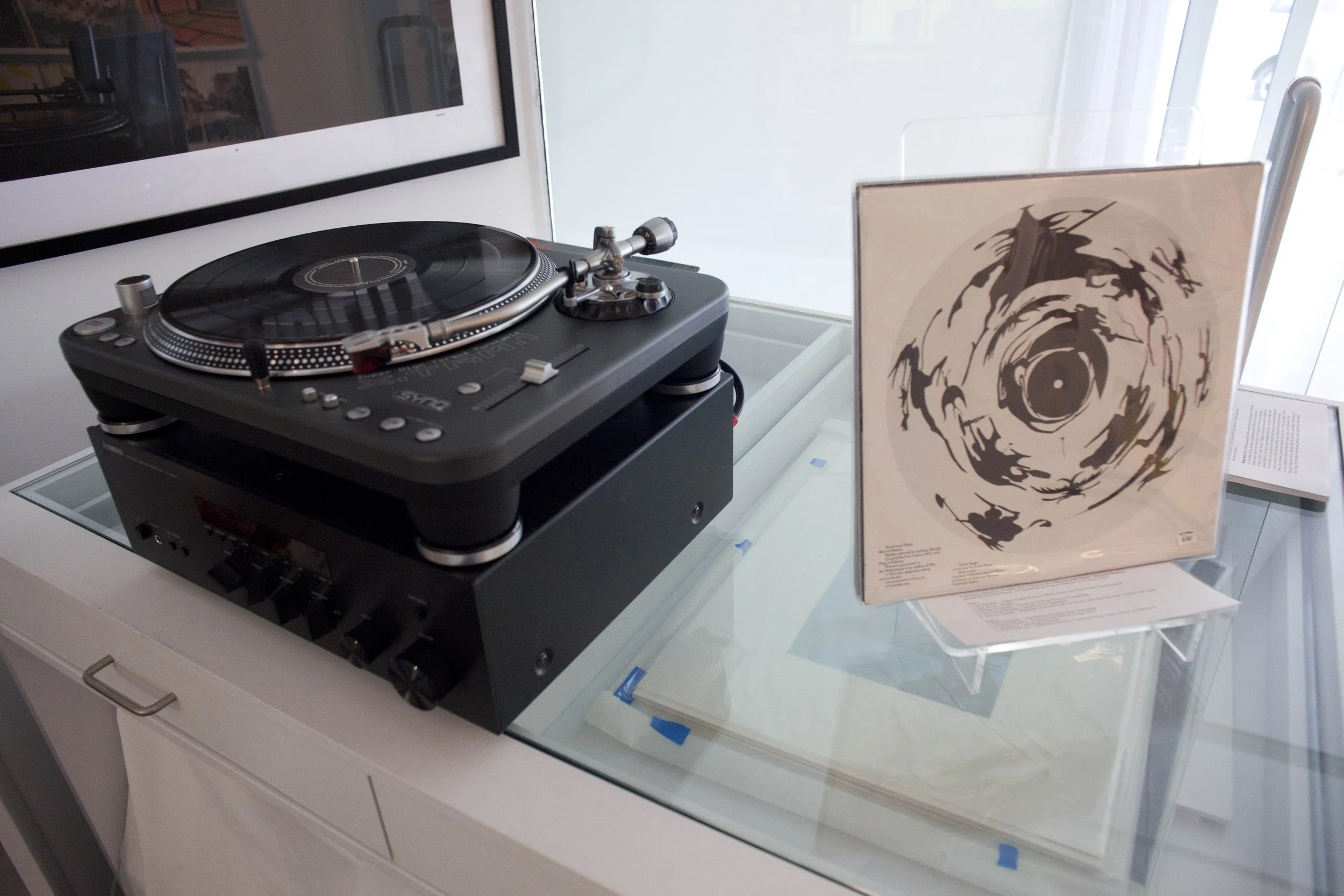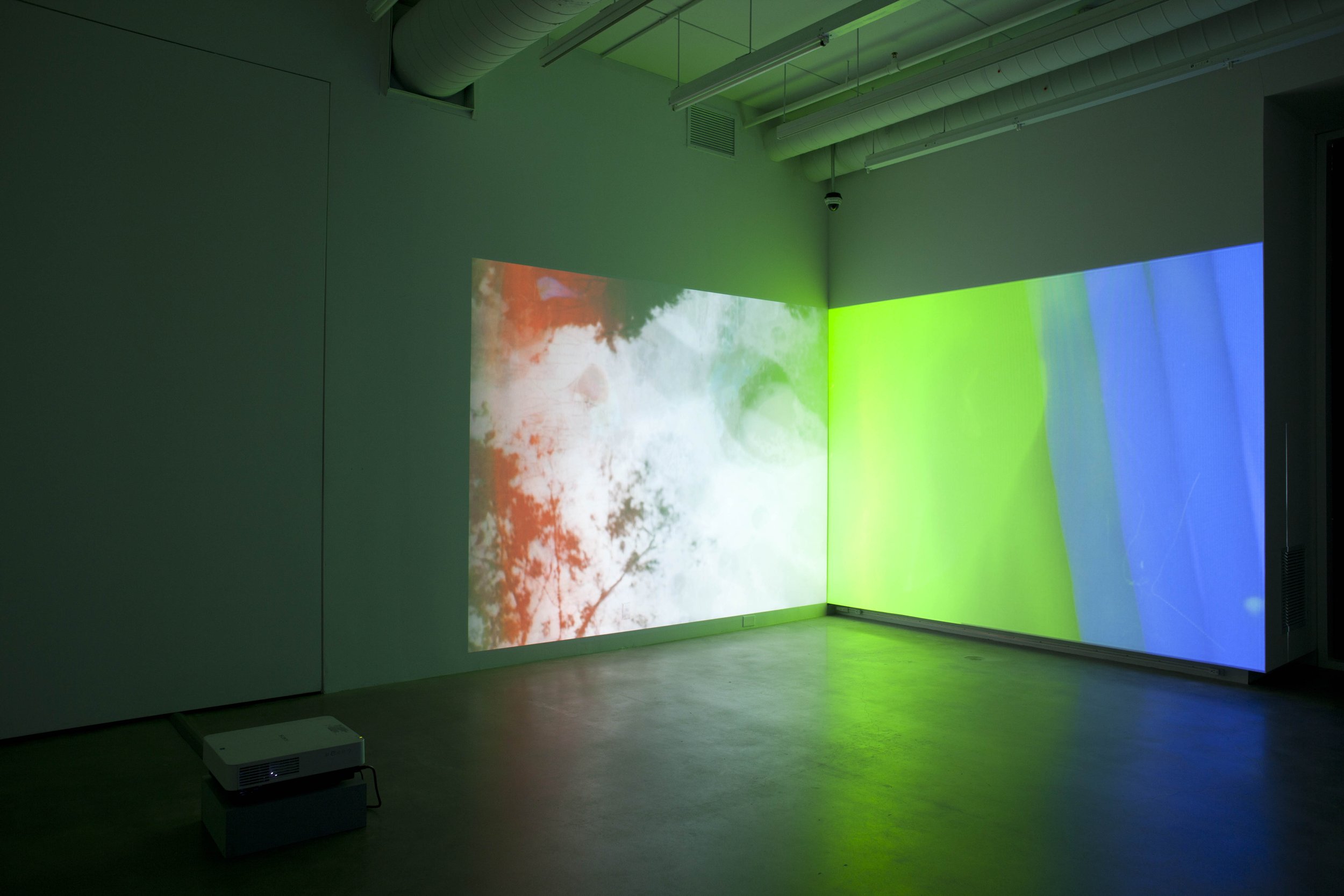
Sound & Vision: Crossroads
Popular music accompanies or is constitutive of some of our most resonant and widely shared cultural moments. The ecstatic potential of rock music provides a space to exceed standardized terms of representation, language and control. Through film, video and installations, the artists in Sound & Vision: Crossroads explore popular music as an agent and conduit of social change.
Brion Gysin and Ian Somerville’s Dreamachine (1960) is a sculptural apparatus created using a record player and light to invoke physically altered consciousness. In Rock My Religion (1982), Dan Graham connects the ecstasy of the 18th century American religious dissidents the Shakers and punk rock, and Graham’s Performance Café with Perforated Sides, sited on Plug In’s roof terrace invites viewers to perform. Joachim Koester’s Tarantism (2007)explores the physical and emotional connotations of dance as a potentially emancipatory practice stemming from the Middle Ages. In Kevin Ei-ichi deForest ‘s Orpheus Groove (for Dad) (2012) the viewer walks through the projection screen showing a video incorporating Cocteau’s Orpheus(1950), after the legendary musician, poet and prophet. In this work, one literally inserts their body into the visual plane/space of film. Cory Arcangel’s Composition #7 (2009) wryly takes its name from composer La Monte Young’s extended composition in which the listener will experience their own bodies inside sound. Jennifer West’s films Led Zeppelin Alchemy Film (2007) and Nirvana Alchemy Film (2007) reference film maker Tony Conrad’s structural film experiments of the 1960s but add a visceral and performative element in the production of the film by “treating” the stock through performance with chemicals, food and laxatives, referencing the body and lyrics which inspire each film. Rodney Graham’s Rotary Psycho-Opticon (2008) references the roto-reliefs of Marcel Duchamp (1935) and is a stage prop, a site to enact desire, further inspired by a performance by Black Sabbath on 1970s Belgian TV. Hannah Wilke’s Hello Boys (1975) documents a performance that is simultaneously framed as a public representation and internal exploration accompanied by rock music.
The exhibition invokes alternately the personal, domestic spaces of the living room or teenage bedroom and the space of mass public performance—the stage of a rock concert. The transition describes an arc of social agency from the personal to the public on intimate and grand scales.
The accumulation of knowledge, emotion, and physical experience in art, music and film can exceed the boundaries of language and knowledge management. The crossroads in this exhibition include meetings of the public and private, the historical and present, and the optic, sonic, haptic and beyond. By implicating the excesses of the human body as conduits and agents in radicalizing social practice, this exhibition provides a forum for re-interpreting the social construction of space.
Plug in ICA April 14 to June 17, 2012
Curated by Anthony Kiendl
Artists: Cory Arcangel (New York), Kevin Ei-ichi deForest (Winnipeg/Brandon), Dan Graham (New York), Rodney Graham (Vancouver), Brion Gysin (Edmonton/Paris) & Ian Somerville (Cambridge), Joachim Koester (Copenhagen), Jennifer West (Los Angeles), and Hannah Wilke (New York).
Kevin Ei-Ichi DeForest, Black Orpheus Groove (for Dad) (2012), video installation.
Jennifer West, Nirvana Alchemy Film (2007), Led Zeppelin Alchemy Film (2007). 16mm Film transferred to video.
Hannah Wilke, Hello Boys, 1975, video.
Joachim Koester, Tarantism (2007), looped 16mm film.
Rodney Graham, Rotary-Psycho Opticon (2008), installation view.
Rodney Graham, Rotary-Psycho Opticon (2008), installation.
Cory Arcangel, Composition #7 (2009), video game installation.
Dan Graham, Performance Café with Perforated Sides (2010).
